|
On the Road Again
Despite a freezing fog over most of East Anglia, it was a pleasure to get back on the literary road again last month. It is always a delight to appear in cabaret with my old and distinguished friend Colin Dexter, but especially so in the timbered halls and in front of roaring log fires at the splendid Swan Hotel in Lavenham in Suffolk.
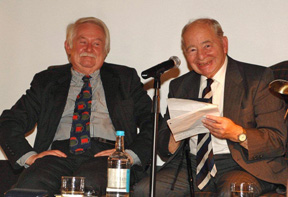
The occasion was a sumptuous dinner to promote the fledgling Lavenham Literary Festival, which is surely set to be one of the highlights of the East Anglian social scene in 2011. Colin regaled an enthralled audience of Inspector Morse fans with his usual erudition and wit (and just a little bit of Latin) and admitted to me over dinner that in his youth he had been taught French by the legendary Gerard Hoffnung. For anyone who remembers – and millions do – Hoffnung’s famous ‘Bricklayer’s Story’ from his address to the Oxford Union, one can see where Colin learned his comic timing.

My literary itinerary then took me into the Fenlands of Cambridgeshire where I had been invited by the friendly – and incredibly well-read – people of Lode to participate in their first book festival.
In many ways, I felt perfectly at home, for this was the very countryside which helped shape the legend of Hereward the Wake, a prototype Robin Hood, almost a thousand years ago. Sadly there is no pub in Lode any more (there were once nine!) but the tiny population bands together with neighbouring villages to support a community library (with little help from local government) and no fewer than four book groups.
The village of Lode is already known for the famous gardens of Anglesey Abbey and the stoneground flour produced at Lode Mill. It is only a matter of time before it is known for its Book Festival too.
[On a serious note, any publisher or author willing to donate the odd book to Bottisham Community Library can get in touch with me in the first instance. Under current legislation I have to point out that other community libraries are available, but they’re not run by such nice people.]
Vintage Thrills
It is just possible that I have mentioned in columns past that I have the honour to be the Series Editor of Top Notch Thrillers, an imprint of the blossoming Ostara Publishing company, which specialises in rescuing great British thrillers from the 1960s and 70s which do not deserve to be forgotten.
With perfect timing (for those worried about what to buy a discerning reader relative for Christmas), there are two new Top Notch Thrillers out this week, though neither should need any introduction to the truly discerning reader.
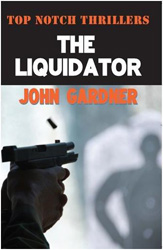
The Liquidator, first published in 1964, launched the career of John Gardner, who was to become a major force in British thriller writing. Published only a few months after the death of Ian Fleming, The Liquidator was an affectionate tongue-in-cheek take on the snowballing James Bond phenomenon and even though clearly a spoof, some critics hailed Gardner’s far-from-heroic hero Boysie Oakes as the ‘natural successor’ to Bond. It was ironic that, a decade later, Gardner was asked to reinvent the Bond (novel) franchise and went on to write more Bond books than Ian Fleming did, as well as publishing prolifically in his own right.
Liquidator spawned a series of Boysie Oakes adventures – including Understrike and Amber Nine – and a film, starring Rod Taylor as Boysie and the wonderful Eric Sykes as the lugubrious hit-man Griffin.
Victor Canning is one of the most affectionately-remembered names in British thrillerdom even though his 50-year career as a published author spanned several genres, including that rare breed, the British private eye novel (with his ‘Rex Carver’ series in the 1960s).
In time for Canning’s Centenary next year, Top Notch Thrillers has re-issued probably his best-known thriller, The Rainbird Pattern, from 1972 – the year it won the Crime Writers’ Silver Dagger – and which was, four years later, the source material for Alfred Hitchcock’s last film, Family Plot.
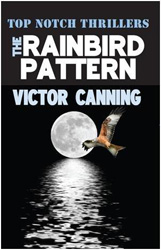
Rainbird Pattern was described by one critic on publication as “a most cunning Canning” and it offers a master-class in how to interweave seemingly unconnected plotlines around eight or nine fully-drawn characters. So cunningly, and at times gently, does Canning draw the threads together, mostly in the tranquil setting of the English countryside, that the utterly ruthless, stone-cold killings (at least five of them) are made even more shocking. Also, and quite remarkably for 1972, Canning predicts the use of computer databases by regional police forces.
All Top Notch Thrillers are available print-on-demand via Amazon or any half-decent bookshop. Full details of the entire TNT series are on www.ostarapublishing.co.uk.
Iconic Status
I have long maintained that crime writing was a very broad church and that the fictional detectives created by it were some of the most memorable fictional characters in fiction, certainly in the 20th century. Although few people ever listen to me, I am sure that serious students of the genre will consult the new, quite magisterial two-volume study Icons of Mystery and Crime Detection: From Sleuths to Superheroes which shows just how broad a church it is and how memorable characters from fiction have become icons of modern western culture.

American academic Professor Mitzi Brunsdale does a magnificent job of illustrating how mystery fiction expanded from short story to novel to film, television and comic books and produced iconic hero figures from Holmes to Batman. All the usual suspects are present and correct – James Bond (‘The Byronic Spy’), Philip Marlowe (‘The Detective as Knight Errant’), Lord Peter Wimsey (‘The Aristocratic Sleuth’), Mike Hammer (‘A Very Imperfect, Far from Gentle Knight’), Jessica Fletcher (‘The Mystery Writer Snoop’) and Miss Marple (‘The Elderly Snoop’) – but there are others which might surprise the lay reader, particularly the British one
The inclusion as Icons of: Batman (‘The Herculean Detective’), Inspector Clouseau (‘The Detective as Buffoon’), Dirty Harry (‘The Vigilante Cop’), Dick Tracy, the Dragnet television series, Nero Wolfe (‘The Armchair Detective’) and Zorro (‘The Masked Avenger’), may raise the odd eyebrow but Professor Brunsdale ably defends them all.

She also makes a noble case for including one non-fictional character as an Icon: film director Alfred Hitchcock.
The research for this book is exhaustive and the background to these iconic characters quite fascinating (I learned an awful lot about G. K. Chesterton for one) and the bibliographies for each of the 24 linked essays are a marvellous reference source in themselves. There are also timelines (perhaps a tad too detailed) which put the characters in their historical contexts.
From a British perspective, one can offer (as one is expected to) a few very mild reservations, perhaps putting a case for Richard Hannay (‘The Imperial Adventurer’?), Dixon of Dock Green (‘The Quintessential British Bobby’?) and possibly even Dick Barton (‘Hero of the Radio Waves’?) and Inspector Morse (‘Great Brain, Flawed Human’).
Yet it is difficult to argue against the Icons included, though I have minor doubts that the wonderful Tony Hillerman’s Navajo detectives Leaphorn and Chee actually fit the definition of ‘icon’ provided by the publisher.
In short, this is a valuable work and will be an invaluable reference source for future generations of students of the genre, to whom, no doubt, the cover price (£120 in the UK) will seem small beer indeed.
Still Living, Still Learning
For peace of mind, and the state of my blood pressure, I long since ceased to despair whenever a bookshop assistant looked at me blankly and said “Who?” when I asked for a title by that Godfather of the modern spy novel Eric Ambler
It used to be my personal litmus test for a bookshop and I would demand an Ambler out of pure devilment, for naturally I have my own collection. In fact, one of my cherished possessions is a 1943 (American) Pocket Books edition of Journey into Fear, printed as it proudly says, in strict conformity with wartime regulations. It also exhorts me to buy War Bonds and to send the book, when read, to a boy in the armed forces anywhere for only 3 cents. (I presume they mean the Allied armed forces as I cannot think Eric Ambler would have been high on the Wehrmacht’s reading list.)
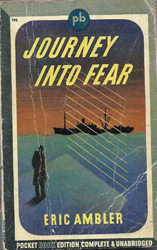
The publishers kindly suggest that I may wish to ‘trade up’ on my wartime paperback and obtain ‘a more permanent edition substantially bound’ by sending it, along with $1.75 to Pocket Books Inc.,1230 Sixth Avenue, New York City. I do not know if this offer is still open, but then I see little need for it, as my 67-year-old paperback is still very readable.
It also has a helpful “Suggestions for further reading” appendix which includes Manhunt by Geoffrey Household (better known as Rogue Male) with the tempting description: “Ingenious thriller of a sportsman who goes gunning for a Dictator” – which I thought was rather nicely put.
However, one is never too old to learn (though that is not a maxim I usually apply to ignorant bookshop assistants however youthful) and I have recently discovered five novels co-written by Ambler and Charles Rodda between 1950 and 1958.
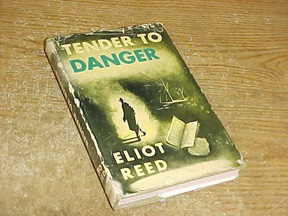
These thrillers, including The Maras Affair, Tender To Danger and Skytip, were all published under the joint pen-name of Eliot Reed, which explains the confusion as for years I thought that was the name of the attractive blonde doctor in the humorous television show Scrubs.
Wake Up Call
Whilst idly leafing through the fascinating 2011 catalogues produced by our wonderful publishers, I allowed my eye to wander away from my usual remit of crime fiction and thrillers.
It was immediately taken by two historical novels with the same hero. First to appear, from Penguin, will be Conquest by Stewart Binns, which deals with “Hereward of Bourne, the champion of the English” who “unites the resistance to William the Conqueror and the Norman invasion of 1066.”

|
Then later in the year, Transworld offers Hereward the Last Englishman by James Wilde, the story of Hereward (known to legend as ‘the Wake’) set, I believe, in the year 1062.
Now I have been able to discover very little about these novels so far, but on consulting the jolly old interweb I chanced upon a site dedicated to readers of historical novels – and very well-informed they are, albeit American.
Mr Wilde’s book was mentioned some time ago – back in 2009 unless somebody forgot to put their computer clock back for winter – and is indeed listed as ‘forthcoming’. What was really interesting though, was that a contributor to the site then posed the question: Has anyone read Mike Ripley’s version of the Hereward story? Amazingly, somebody had and posted the following generous reply:
Imagine Bernard Cornwell's "Azincourt " set in the Fens, and you'll get the drift of Mike Ripley's "Hereward". Blood and mud galore! No sign of the Ripley humour here, not even the black sort. Ripley tells the story through historian Gerald of Wales, who researching the earlier Chronicles of Hereward for the truth of the outlaw's exploits. Compelling, but not for the faint-hearted.
This wise and discerning ‘blogger’ (who unfortunately remains anonymous so I do not know where to send the cheque) is, of course, referring to my modest foray into historical fiction The Legend of Hereward which was published in 2007 and which I believe is still in print thanks to those highly civilised publishers at Severn House.

I do look forward to reviewing the new ‘Hereward’ titles, for to be ignorant of history is to have the mind of a child, as somebody once said, and I am sure I will learn much from them.
So Good They Named It Twice
The annual Faber & Faber party to launch their Spring catalogue is always a delight as one rarely gets to hear so many authors making so many speeches in one place at one time –and the company even provided a recorded video link for one poor author stranded in the far north, or at least Leeds.
Sadly, that veteran party-goer Professor Barry Forshaw had to leave before the formal part of the evening, no doubt having several other soirees to attend, but he left me in the always good company of the erudite – if irritatingly young and annoyingly tall – Jake Kerridge of that once-great newspaper the Daily Telegraph.

We were both fascinated by Scottish writer Doug Johnstone who enthused about his forthcoming thriller Smokeheads to be published in March, which sounds a jolly tale of four male thirty-something friends embarking on a ‘whisky tour’ of the legendary island of Islay. The author himself described his plot in terms of a Hollywood movie pitch as: “Sideways meets Deliverance” and I am sure that the Island and Highlands Tourist Board and all CalMac retail outlets have already put in bulk orders.
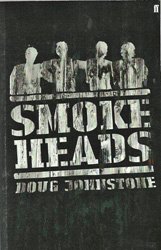
For security reasons I was unable to attend last month’s Ellis Peters’ Award party at the luxurious Berchtesgaden-style retreat which form the offices of publishers Little,Brown. Several former colleagues in the Security Services – it is now common knowledge that I once worked in Department W.O.O.C.(P) – had warned me that my safety could not be guaranteed due to a demonstration in the streets of the hundreds of crime writers I had foolishly, and quite erroneously, tipped to be on the Ellis Peters shortlist.
And thus I missed the chance to hear Professor Forshaw as he addressed the assembled crowds and announce that this year’s winner was Rory Clements with his Tudor thriller Revenger from those Jolly Magnificent publishers John Murray.

I have met the charming and gentle Rory Clements on several occasions and would have been delighted to share a glass of the winner’s champagne with him, but I understand that the bottle earmarked as his prize mysteriously disappeared before it could be presented and could even have been stolen from under the noses of the assembled crime writers.
In Tudor times, this would have been a hanging offence or at least worth a prolonged stay in the stocks. Ah, happy days...
Talk Like A Pirate
I always observe that wonderful international institution Talk Like A Pirate Day and though I am unsure as to the exact date on which it falls in 2011, I will be celebrating it by reading a brace of thrillers which have taken the (far less amusing) subject of modern-day piracy as their theme.
The first to be published, in February by Orion, is the delayed Elmore Leonard thriller Djibouti which is set in Somalia and is described as ‘a western on water’. Then in April, Macmillan publish the latest novel from the writer once described as The Man With the Golden Typewriter, that legend out of Africa, Wilbur Smith. Those In Peril is also set in those dangerous waters of the Indian Ocean off Somalia where the pirates are far more cruel and far less jolly than their counterparts in the Caribbean.
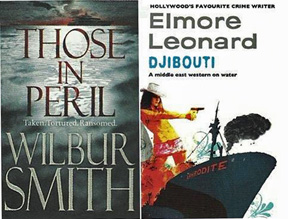
The American Friend
It is the time of year when social convention and good manners mean that at Ripster Hall we have to suffer the annual visit of my distant American cousin Godfrey Daniel, who never misses an opportunity to raid the wine cellar and lecture me on the cruel treatment of forgotten British crime writers.
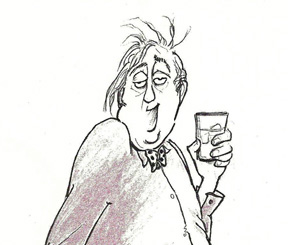
I hate to say it, but this year he seems to have a point even though he is quite insufferable in making it.
He takes great glee in the fact that the ‘Carolus Deene’ mysteries of Leo Bruce are faithfully reissued in America whilst remaining out-of-print for over 30 years and forgotten in Britain; surely a disgraceful state of affairs for a prolific, funny and very English crime writer.
To prove his point Godfrey presented me with Jack on the Gallows Tree, which dates from 1960 but has been kept from obscurity by Academy Publishers of Chicago.
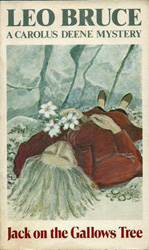
Leo Bruce was the pen-name of travel-writer and novelist Rupert Croft-Cooke (1903 -1979) who is best known, if remembered at all, for his comic detective ‘Sergeant Beef’ who appeared in, I think, eight novels between 1936 and 1952. In 1955, Bruce introduced a new sleuth, Carolus Deene, the ‘Gentleman Detective’ (of private means) who also teaches history at a boys’ public school, who went on to feature in more than 20 novels. The Deene books are – as with everything Bruce did – charming and literate and quite why they are so little known and under-appreciated over here is a mystery. It is also extremely irritating that I had to be introduced to them by my cousin Godfrey – an American!
He (Godfrey) also insists that I tell every deprived British crime fiction fan I meet that a new edition of Leo Bruce’s Case With Four Clowns, a Sergeant Beef novel from 1939, was republished in Chicago in September.
I hear of Angels everywhere
In the course of this year, I have reported sightings of my ‘Angel’ novels in both the Arctic and the Antarctic, and Middle Earth (New Zealand). Now comes proof that a modest selection of titles have been spotted on proud display in the public library of San Francisco.

I am indebted to my ‘secret shopper’ (whose identity must, obviously, be kept secret) for snapping away on his mobile phone right up to the moment the security guards arrived.
Original Sins, Familiar Faces
The Crime Writers’ Association’s annual anthology, Original Sins, is now out from publisher Severn House, and very stylish it looks too with a clever, quite arty cover and short stories from some very familiar names from the mystery world, including Reginald Hill, Peter Lovesey, Andrew Taylor, Christopher Fowler and Barbara Nadel.
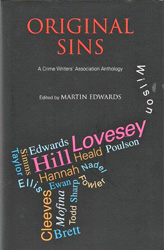
There are also some familiar faces in this collection, offering a chance to renew old acquaintance with Tim Heald’s Simon Bognor and that divine combination of actor/drunk/sleuth Charles Paris, as created by Simon Brett and so brilliantly played in the BBC’s Radio 4 adaptations by Bill Nighy.
Look out also for a nice little chiller from Sophie Hannah, whose new novel Lasting Damage is published by Hodder in February.

And there’s a story by Zoe Sharp, Rules of Engagement, which features a protagonist with the totally unlikely name of ‘Angel’.
|
Successor to The Stig?
I did rather enjoy Jo Nesbo’s The Redbreast a few years ago, with its back story of the wartime activities of Norwegian SS regiments counterpointing the plotline of fascists and skinheads in modern day Scandinavia.
In January, Harvill Secker will publish his new novel, the 600+ page The Leopard with the promotional strap-line that Mr Nesbo is “The Next Stieg Larsson”.
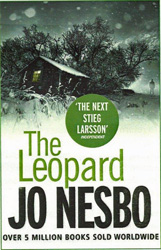
I do not know if Mr Nesbo has a wife or long-term partner, or a brother or even a father, but if he does I hope this prediction is wrong.
Burying A Bone
Little, Brown may well have been voted ‘Publisher of the Year’ for 2010, but I am afraid I have a bone to pick with their popular imprint Sphere over Louise Penny’s new Armand Gamache mystery, Bury Your Dead.
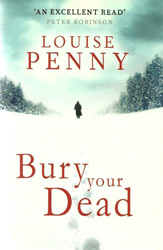
The Sphere Press Release I received (and still retain) quite clearly announces that Bury Your Dead will be published as a paperback original on 3rd February 2011 and I dutifully reported that as fact in my November column. (It was notable as it was one of the very few actually true facts in that column.)
Almost immediately I was inundated with a telephone call from a distressed and worried bookseller who told me he already had hardback copies of this “paperback original” and had had them since late September, and wanted to know if it was permitted to sell them to the demanding legions of Louise Penny fans. He felt quite sure that he would be going against what he had read in this column and therefore breaking the law, but in the end I calmed him down and allowed him to carry on selling.
Although terribly disappointed to have missed the caribou cook-out and Maple Syrup shots drinking contest at Canada House which accompanies every new Louise Penny title, I will wait for the paperback original version in February as good manners demand.
Y Viva Espana
“Spain is the new Scandinavia!” someone is bound to cry next year, but of course it isn’t. Spain is a warm country where the inhabitants have been known to laugh and smile on occasion and millions of foreigners enjoy annual holidays there. It also produces some fine wines, fortified wines, spirits and a very drinkable lager beer and has an excellent football team. I hear the food is quite good too, the flamenco exhilarating and the guitar playing quite breathtaking.
But there again, I have never actually been to Spain and so my extensive knowledge is drawn from crime fiction set there, mostly written by British authors, of which there is a long tradition. Much longer than many of today’s short-memory youth in positions of power in publishing realise.
Even at my great age I have no problem remembering the Superintendent Luis Bernal policiers (if you’ll pardon my French) of ‘David Serafin’ (the Oxford Don and medievalist Ian Michael) from 1979-1988 or the even earlier Inspector Alvarez series still being written by ex-pat Roderic Jeffries. More recently, of course, Robert Wilson and David Hewson (before setting his sights on Italy) both made criminal hay in the Spanish sun.
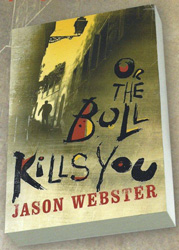
I am looking forward to February when that fine old publishing name Chatto & Windus brings us a new Spanish cop – Chief Inspector Max Camara – in a debut novel entitled Or The Bull Kills You from Jason Webster, who has written several non-fiction books on Spain and now lives in Valencia.
At almost exactly the same time, those far-from-bitter publishers at Bitter Lemon publish a Barcelona-set crime novel by a writer actually born in Barcelona (so, yes, we can say ‘She’s from Barcelona’ if we really must), entitled A Shortcut to Paradise by Teresa Solano.
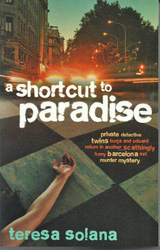
The chattering classes who only read crime novels in translation will no doubt claim bonus kudos points around the dinner table by pointing out that A Shortcut to Paradise is actually translated from the original Catalan by Peter Bush, who also translates for the wonderful Cuban crime writer Leonardo Padura.
Annual Cull
The annual thinning, or ‘cull’ as my factotum Waldo insists on calling it, of the library here at Ripster Hall went off without a hitch, thanks to help with the heavy lifting from members of the Parachute Regiment.

As usual, all the books deemed surplus to requirement were transported to as local school hall for distribution to the tenants of the estate and the needy of the surrounding parishes.

This exercise, although intellectually painful, is necessary to provide shelf space in the Hall for all the new crime and thriller stories lurking around the corner in 2011 and over 200 titles have already been announced as to-be-published in the first five months.
The Country Grapevine
For those of us who belong to what is sometimes known as ‘the country set’ the grapevine has been positively humming of late, though not in anticipation of the impending royal wedding as the ill-informed may have thought.
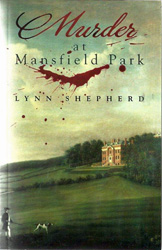
The latest “buzz” as I believe it is called, concerns the excellent word-of-mouth recommendations coming in for Murder at Mansfield Park, the debut novel of Lynn Shepherd, published by Beautiful Books. Using Jane Austen’s Mansfield Park as a basis, Lynn Shepherd adds all the ingredients of the classic English detective story, cheekily giving a new twist to the term “country house murder”.
The book has already been something of a hit in Canada and the US, where its success as a paperback prompted the publishers to then produce a hardback version, and also in Australia and New Zealand where it sports a different but very impressive cover.
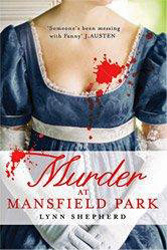
A Ghostly Frost
I intend to make sure I have a stiff drink to hand when I start to read First Frost, which is published by Bantam in January.
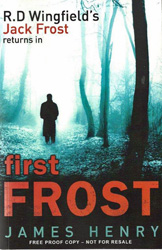
This is billed as ‘the return’ of R. D. Wingfield’s Inspector Frost, though it is in fact a prequel (set in the early1980s) and, of course, it is not by my old mate, the late Rodney Wingfield.
Knowing Rodney’s sense of humour and his fierce devotion to his most famous character, I am reminded of the story of Cole Porter who, on hearing a Rodgers & Hart song for the first time, said: ‘It took two of them to write that?’
For it seems it takes two authors to replace one Rodney Wingfield, First Frost being co-written by James Gurbett and Henry Sutton under the name James Henry.
So I will pour myself a larger bracer of something flammable before I read it, for I have been a dedicated fan of the Frost books for over twenty years. I am far from alone and I hear that Inspector Frost’s many fans in Japan are awaiting his “return” with some trepidation. However, if I were the authors, I would worry less about disappointing fans in Japan than I would about late night telephone calls on publication day, for Rodney – who died in 2007 – insisted on being buried with his trusty mobile phone.....
Christmas Cheer

It is now time to spread a little Christmas cheer by announcing my Shots of the Year awards for 2010. These are unique awards in the world of crime fiction as they come with little fanfare, no large cash prize, no attempt at a transparent judging process, very little publicity and precious little prestige. [Under current legislation I have to point out that other awards are available.]
Crime Shot of the Year: Started Early, Took My Dog by Kate Atkinson (Doubleday).
Thriller Shot of the Year: Our Kind of Traitor by John le Carre (Viking/Penguin).
Historical Shot: Spies of the Balkans by Alan Furst (Weidenfeld).
Shot In Translation: Thirteen Hours by Deon Meyer (Hodder) {translated from the Afrikaans by K.L. Seegers}
First Shot (debut novel): Eye of the Red Tsar by Sam Eastland (Faber).
Comic Shot: Dr Yes by Colin Bateman (Headline).
And there, as my friend Barry Norman never actually said, you have it.
Merry Crimble!
The Ripster
|